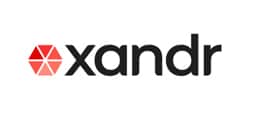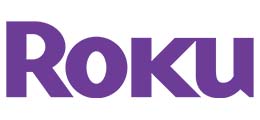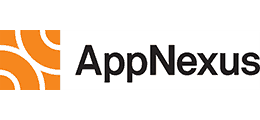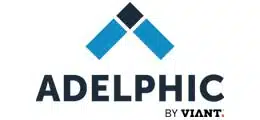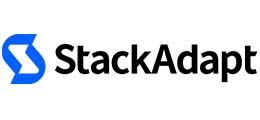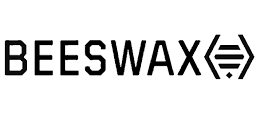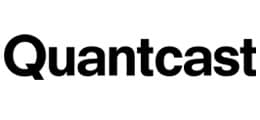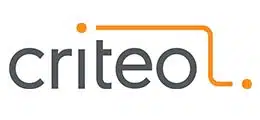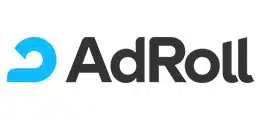Comprehensive Yet Simple Programmatic Reports
Forget about Quarterly Business Reviews that are way too “Top Level” and provide no actionable analysis.
Gourmet Ads Programmatic Reports solution is simple. We provide on a monthly basis Programmatic Buyers and Brands Trading programmatically, complete transparency from a Sell Side perspective. In essence we share all the Business Intelligence we have available to you. Since 2013, we have provided monthly via email (on the 2nd Wednesday of the month) to all our Buyers our Programmatic Reports.


Programmatic Buyer Report Card
Specifically designed for Agency Trading Desks, Demand Side Platforms (DSPs) and Independent Trading Desks, our Programmatic Reports provides programmatic-enabled buyers our short, 3 to 4 Page Buyer Report Card is custom to every buyer. The Report is intended to be a “Top-Level Report”, provide a buyer a complete snapshot of activity for the last 30 days across our managed supply. We are regularly reminded by Agency Trading Desks that our Programmatic Reports are the most comprehensive reporting provided by the Sell Side.
Programmatic Brand Report Card
Largely Based on our Programmatic Buyer Report Card, our Programmatic Brand Report is designed for Brands that have their own internal brand trading desk or a brand’s advertising agency. While the Buyer Report is built upon the Buyers Member ID, the Brand Report is built around either a holding company or multiple brands. This allows us to create highly relevant Programmatic Report around your brand offering something unique and insightful. We can also create them on a country by country basis.


Some of the elements built into each report include ;
Spend by Day & Country
Endemic and Non-Endemic Brands
Ad Sizes & Media Types
Deal IDs Running and Not Live
Top Publishers Websites
Impression Availability
Data Segments Being Purchased
Suggested Bidding Ranges
Popular Creatives plus Creative Previews
…and many more interesting observations
Deal Reporting
Many Programmatic Buyers using multiple DSPs and as such we’ve developed specific Deal Reporting irrespective of the DSP or SSP the deals are setup in. To make it turnkey, our Deal Report provides simplistic and holistic reporting that allows Programmatic Traders to add Deal IDs to campaigns quickly and easily. Our simple naming conventions help illustrate what inventory the Deals include.

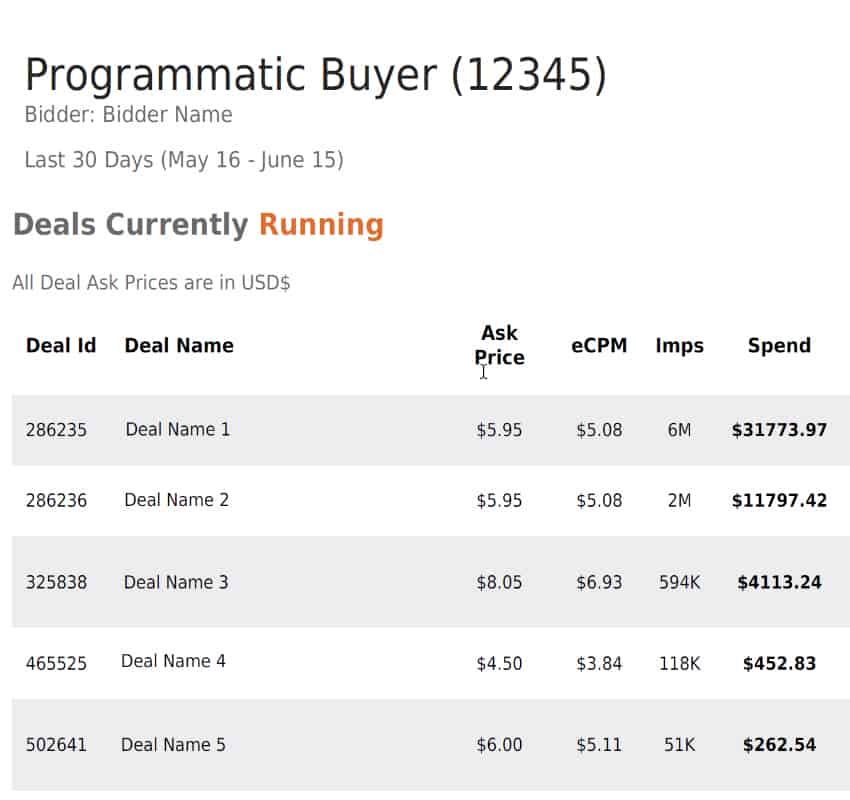
If you’d like to receive any of our Programmatic Reports, Please Contact Us.
- CPACPA is an e-commerce advertising term that stands for Cost per Acquisition. It has different significance depending on the actions that are meant to be tracked.
- CPCCPC or Cost Per Click is a payment model where advertisers pay every time a user clicks on an ad, regardless of the number of impressions. Ads that are merely viewed by users but not clicked on are delivered for free in the pay per click model.
- CPCVCPCV or Cost Per Completed View is a payment model in video advertising. CPCV is where advertisers only pay when a video ad plays through to completion. In order for the advertiser to be invoiced under the CPCV pricing model, the ad must be fully played from start to finish, regardless of how lengthy it is.
- CPECPE model means that an ad is paid only when it’s engaged with, as opposed to other payment models such as CPC and CPM. The cost per engagement, or CPE, is the cost incurred time an advertisement is viewed. Engagements might range from muting or stopping a video to providing contact information.
- CPICPI (Cost Per Install) campaigns are specific to mobile apps and the advertiser only pays once the app has been installed on the mobile device. For mobile user acquisition initiatives, the CPI model is employed, where advertising or app marketers pay per installation.
- CPMCPM is an advertising term that stands for Cost Per Mille (thousand impressions). CPM is best used for brand awareness campaigns. Cost Per Mille (CPM) is the cost of having your online advertisement be viewed 1,000 times.
- CPVCPV is programmatic bidding method to buy video impressions, advertiser will only pay for video impressions when actually viewed. An advertiser will only pay for video impressions (VAST or VPAID) using the programmatic bidding technique known as "CPV" (or "Cost Per View") if the impression is actually seen.
- CTRCTR or Click-Through Rate is a performance metric that shows how many times users clicked on an ad or a link with display, and email marketing campaigns. It is commonly used by marketers and advertising professionals to assess the performance of search, display, and email marketing initiatives.
- CTVCTV bridges the gap between traditional television and the digital world, providing a platform for targeted, contextually relevant advertising.
Integrated Demand Side Platform Companies (DSPs)
For programmatic enabled Brands with In-house Trading Teams, Agency Trading Desks, Advertising Agencies, Retargeters or Independent Trading Desk, Gourmet Ads is built upon the Xandr tech stack and fully integrated Programmatically with the following Demand Side Platform Companies (DSP) enabling streamlined, transparent connections between Advertisers through to end-user Consumers.





